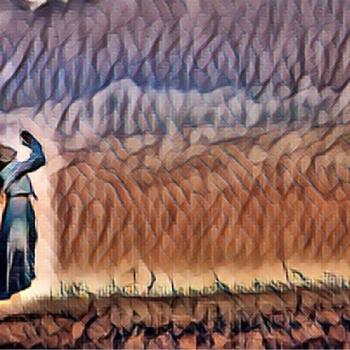
What is the difference between loneliness and aloneness? Why is solitude a refuge for some but a punishment for others? Those were two of the many questions that came up during a Red Bench event, a monthly interfaith conversation in Austin run by Interfaith Action of Central Texas.
At my table, we quickly came to the understanding that there is a great deal of difference between aloneness and loneliness or purposeful solitude and a fearful disconnect.
A graduating student of Austin Presbyterian Theological Seminary—our host for the evening—summarized the difference well when he said:
“I see great wealth in voluntary solitude and great poverty in involuntary solitude.”
While I appreciate voluntary solitude, I find that there is something magical that happens during conversations like the one we had at this event; a deepening of understanding that only comes through viewing the same topic from several different perspectives.
Three Types of Valuable Solitude
During our conversation, I realized that there are at least three types of solitude that I value greatly in my life. The first two are active while the third is passive but not exactly inactive. Allow me to explain.
1. Digestive Solitude
The first type of active solitude is digestive. I turn off all external stimuli and allow my mind to wander, digest, and reflect; to churn through all the information and sensations I have been exposed to.
During this time, my body can be either completely passive or engaged in some menial task, such as walking, bathing, cooking, cleaning, yard work, yoga, weight lifting, etc.
Without regular digestive periods I get overwhelmed, just like a stomach would get overloaded if it were continually stuffed with food.
2. Intentional Thinking
The second type of active solitude is intentional. As a writer, I consistently use intentional thinking in solitude.
For example, I will come up with a title, write a short outline, and then go for a walk or take a bath. During that period of solitude I will focus one pointedly on the topic and get most of my thinking done. When I come back from such an active period of solitude, I find that many of my articles/book passages practically write themselves.
Clear writing equals clear thinking.
Solitude gives me clarity, just like a lake will reflect mirror images of its surroundings when waves subside.
I also use this type of intentional solitude while problem solving and goal setting. Free of distractions, I find that the act of thinking deliberately in solitude always returns the investment of time manifold.
3. Conscious Being
The opposite of active is inactive or passive, which is why those were the first words that popped into my head when I was making these distinctions. But the kind of passive solitude that I experience when I meditate, for example, is not just sitting around and doing nothing or a state of laziness, but a conscious state of being that radiates peace.
I find this type of meditative solitude to be of utmost importance. It has physiological, emotional, mental, and spiritual benefits too numerous to count, and yet it is unassuming. There is nowhere to go, nothing to do. It is a state of pure being.
Value in All Three
Whether my solitude is digestive, intentional, or one of conscious being, I find value in the practice of being alone. I am a social animal by nature and would never dream of moving away to a monastery or living in a cave, but I cannot go many days without having some time to myself, a time of conscious or reflective solitude.
A Few Words About the Red Bench
I am a staunch supporter of the work that iACT does in Central Texas. In an era when people often talk at each other rather to each other, I find that the Red Bench program, where small groups of people have respectful and safe discussions, has the potential to expand our minds and remind us of each others humanity, even when we disagree ideologically. If you are in Central Texas, I urge you to join one of their monthly discussions. You will likely meet me there.
Gudjon Bergmann
Author & Interfaith Minister
Picture: Pexels.com CC0 License












